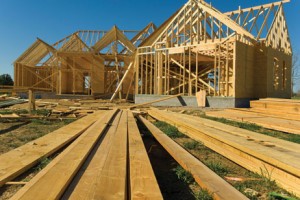A mill fire in the British Columbia is impacting the current price of lumber, though the future for the construction material is still debatable.
The result of wood dust, the fire has pushed the Random Lengths Framing Lumber Composite Price (FLCP), which tracks the price of lumber, to $316 last Friday, according to the NAHB. In addition, there are other supply-side issues, particularly a nasty beetle infestation, that have also impacted lumber supplies from British Columbia.
The increased price, though, may balance out, given previously established trade agreements between the U.S. and Canada. Under the U.S.-Canadian Softwood Lumber Agreement (SLA), tariffs on imports of Canadian lumber are reduced when the average price reaches a certain point, and if the recent increases raise the average price above the $315 mark for the April 20 to May 11 period, tariffs would be reduced for the month of June.
Because of leaner inventories, the FLCP had already been climbing steadily since November 2011, when it bottomed out at $252. The NAHB noted the mill fire has renewed interest in the long-term supply implications of British Columbia’s lumber, a constant source of fear for industry professionals in light of the highly-damaging mountain pine beetle infestations, which have been going on the past few years. In what has been called an “epidemic,” the beetles have compromised such a large volume of trees that, by 2022, the lost supply will have been enough to build 40 years’ of single-family homes in the United States, and a recent study by the British Columbia Interior estimated that timber supply could fall by one third over the next 20 years.
Those supply predicaments, though, are developing amidst the best housing construction market in years. Building permits have been posting double-digit annual increases, the multifamily market is anticipating huge growth for 2012, and, to top it all off, individual builders are reporting astronomical increases in sales from last year. Along with China’s persistent demand, the NAHB noted the new activity in the U.S. could also place more upward pressure on prices.
New worldwide trade agreements, though, will provide some downward pressure on prices. Russia’s entrance to the World Trade Organization is expected o increase lumber competitiveness through the reduced tariffs on Russia’s lumber exports, which will increase supply to China and the European markets.
“Theoretically, this would ease price pressures in the US market, but procedural issues of implementation could delay this effect,” the NAHB concluded.
